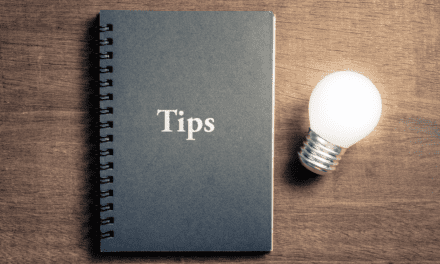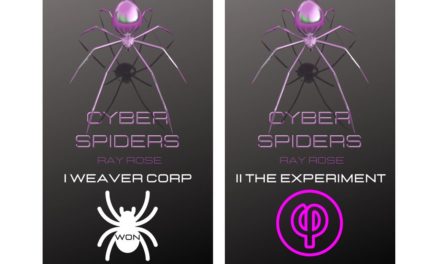This excellent article in Writer’s Digest on how to make dialogue (as in short stories and novels) sound more natural – by editing it. It seemed like an oxymoron at first, but consider this REAL dialogue straight off the tape recorder:
Caller: “Brian? Got a minute? I got a letter from Carl today – where is it? I had it right here a minute ago. Blast. Who put that coffee there! Oh god, another disaster – yeah, here it is… he wants to switch your talk from Friday to Sunday.”
Me: “Sorry. Who is this?”
Friend: “Oh. I’m sorry. I’m always doing that, I’m so sorry. It’s June Underhill calling about the conference in Rotorua. Carl Horn asked me to check with you about switching your speech day.”
That’s the way real people talk. All jumbled up sometimes. But if you put that into a story it wouldn’t read well. In fact, it’s dead boring.
Consider for a moment something which really stirs the heart. Like a Jumbo Jet taking off over your head at full thrust. Or the tailrace of a hydro dam when the sluice gates are opened. The point is, it might look like the forces of nature but in reality it isn’t as natural as you think. Actually, both breathtaking events are highly contrived and artificial.
“In art, the completely natural seldom works” says Nancy Kress who has written seven novels and dialogue for over 300 characters. “Instead, nature is refined, pruned, trained, heightened, considered and rehearsed. Consider the perfect football move which looks so natural. It is planned, tried, refined then practised and practised and practised, so on the day it looks spontaneously natural . . .
Good dialogue is artificially concise
Kress says nearly all normal people repeat themselves, interrupt themselves, start a conversation midway and wonder why no one understands them. They stutter, stammer, use an inexact word then spend four sentences explaining what they really meant.
But if you put this on a page it makes the speaker sound boring, scatter-brained or under great stress. (Check the conversation of Miss Bates in Jane Austen’s Emma.)
But if you intend your character to sound like a normal. together person you’ll need to edit the raw stuff to make it read like coherent, reasonably concise and interesting conversation.
“In real life” says Kress “people develop their own shorthand way of speaking and both parties fully understand the grunts, sentence fragments and hand gestures. So a jumbled conversation can be completely satisfactory. It’s only when it hits the page that it looks so unnatural..
Edited dialogue is not natural. It is more informative, concise and detailed than natural speech. Spoken speech is like a first draft. If we had the opportunity we’d tidy it up before committing it to paper. Like this:
Caller: “Brian? I’m June Underhill, calling about the Toastmasters conference in Rotorua. D’you have a minute?
Me: “Hello June. Sure:’
Caller: “I got a letter from Carl Horn today and he wants you to switch your presentation from Friday to Sunday.”
Me: “That’s fine with me. I’1l just check my diary. Yeah, that’s OK.”
Caller: “Oh good. I’ll tell Carl. It’s at the same time, by the way.”
Notice how the conversation is more productive, but still sounds natural.
But not too artificial
But don’t go to the other extreme. You don’t want dialogue so unnatural and contrived the reader rejects it as implausible. Beware the stilted voice who never uses contractions like I’m, you’ll, that’s, where’s etc. This is the way we all speak in normal conversations.
Beware the voice of authority who says “I do not think, even when you take the financial advantages into account, that Jim’s entrepreneurial venture is viable in this economic climate.”
A real person would say “Well, I don’t think Jim’s new idea will work at the moment.”
Beware the too informative walking encyclopaedia:
“As you know, Ray, we were dirt poor back in the fifties when dad took on that Air Force contract from Wigram repairing boots for the K Force troops in Korea to keep us kids in school at Xavier College.”
Sure, great authors like Somerset Maugham use dialogue to slip information to the reader, but with a lighter touch than this.
Beware the too concise conversation or your character will sound like Sylvester Stallone or Marlon Brando, where a few grunts or snatched phrases suffice. “Hey bud. Gimme a light, huh.”
Good dialogue is emotional
According to Allan Pease, 70% of all communication is body language or nonverbal. A sentence like ‘I didn’t know he stole the money’ can have six different meanings, depending upon the voice inflection and the stress on each single word. Try it. So you need to convey the tone of voice or the stressed word in some way.
“In fiction” says Kress “dialogue doesn’t have the support of nonverbal clues. You can write them in, such as hand gestures, tone of voice or where the character is looking while speaking.
“But you may need to increase the emotional level of the words themselves.”
If you were writing a play you could say “Tom was a good man” and the actor’s voice would provide the emotional overtone – anger, resignation, irony etc. But in fiction you might need to heighten the dialogue: ‘Tom was a good man. Damn it. He was such a good man!” The repeat. the mild swear and the exclamation all make it clear that a good man is now dead.
You might also heighten the dialogue with a combination of nonverbal clues to convey the emotion.
“Tom was a good man” Stan said softly. He fumbled with a cigarette. Lit it. But it dropped on the carpet. “Damn it. He was such a good man!” His gaze slowly drifted out the window and the rug smouldered at his feet.
Here the dialogue adds layers of emotion to the words spoken.
Good dialogue is individual
“Good dialogue characterises” says Kress.
In real life much routine communication is generic. We use the same words to order a steak or to compliment our favourite footballer: “Oh, well done.”
But in fiction even routine dialogue can be used to differentiate characters and make them come across as individuals.
“All you ‘ave to do is go out the shed where they pile up them empty crates” said the cockney barmaid Rose in As The Crow F1ies.
Whereas the major says, “It’s not as if my portfolio is all that impressive. All my capital is bound up in land and has been for generations.”
There’s no mistaking who these two characters are when they speak.
“Beware overdoing this character speak” warns Kress. “Even the most eccentric character occasionally says ‘What time is it?’ or ‘Pass the salt’. But if whole sections of a character’s dialogue could be switched to another speaker you haven’t done an effective job of using language to individualise your characters.
“Give each character a personality, a diction, a rhythm and a slant on the world” says Kress.
So that’s the key to good dialogue.
In summary: Writing effective dialogue is a balancing act. Concise without being artificial. Informative without being implausible. Consistently interesting but with brief breaks to be humanly ordinary. Emotional and individual without becoming a parody.
How do you learn to do this?
Step 1: Listen to the ways people speak around you.
Step 2: Read the good authors and see how they write dialogue.
Step 3: Write lots of dialogue yourself. Just for practice. And you know what practice makes?
If you are interested in expanding your writing capabilities, NZIBS has a range of courses.
Do you feel a creative stirring deep within your spirit?
Discover your own ‘voice’. Learn how to develop a plot, characters, dialogue, structure and personal style. It’s even better when you get paid for doing something you enjoy.










